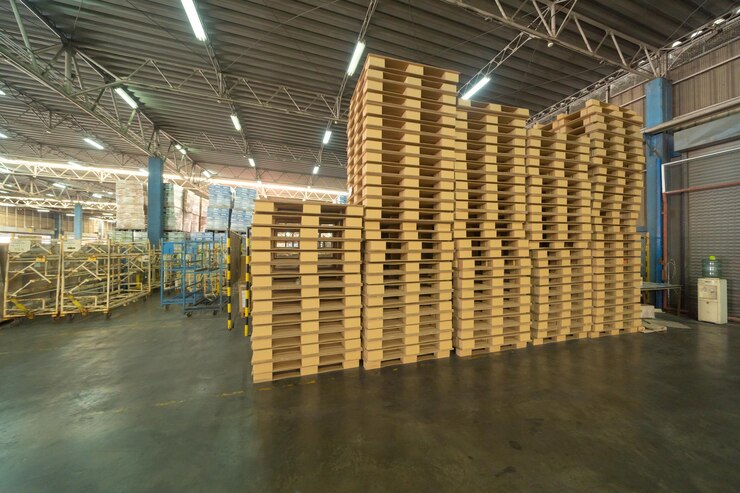Selective Pallet Roacking

Selective Pallet Racking is one of the most commonly used storage systems in warehouses and distribution centers. It is designed to store pallets in a straightforward and efficient manner while allowing easy access to each pallet. This racking system is ideal for businesses that have a diverse range of products and need quick and frequent access to individual pallets.
How Selective Pallet Racking Works:
In selective pallet racking, the pallets are stored on horizontal beams that are supported by vertical uprights, creating a series of adjustable shelves. The system is called "selective" because each pallet can be accessed directly without having to move other pallets, providing full access to every stored unit.
The basic components of selective pallet racking include:
- Uprights: Vertical frames that support the entire structure.
- Beams: Horizontal bars placed across the uprights to hold the pallets.
- Decking: The surface that forms the storage platform for the pallets, which can be made from steel, wood, or other materials.
- Pallets: The loaded units stored on the racks, typically used for bulk or heavy goods.
Advantages of Selective Pallet Racking:
Easy Access: Each pallet is directly accessible without the need to move other pallets, which makes it ideal for warehouses where quick access to any pallet is necessary.
Flexibility: The system can store a wide variety of pallet sizes, and the beams are adjustable, which allows the racking system to be customized according to the needs of the warehouse.
Cost-Effective: It is relatively inexpensive to install and maintain compared to other more complex storage systems, and it doesn't require additional machinery like forklifts to navigate narrow aisles.
High Density Storage: While not the densest option compared to other racking systems (like drive-in or push-back racking), selective pallet racking still offers good space utilization while ensuring efficient and fast access to pallets.
Versatility: It can be used in various industries and applications, from food and beverage to manufacturing and retail. The system works well with a wide range of products and palletized goods.
Disadvantages of Selective Pallet Racking:
Limited Storage Density: Because each pallet is accessible directly, the system requires more aisle space compared to more compact systems like drive-in or drive-thru racking. This can limit storage capacity in facilities with high volume storage needs.
Requires Aisle Space: The need for access to each pallet requires wider aisles, which can reduce the overall storage capacity of the warehouse, especially in spaces with limited floor area.
Not Ideal for High Volume, Low Mix Storage: For businesses storing high volumes of the same product, other systems like push-back or pallet flow racking may provide better storage density and efficiency.
Applications:
Selective pallet racking is widely used in warehouses, distribution centers, and manufacturing plants for storing large quantities of goods. It is ideal for:
- Retail: Storing a variety of different products that require fast access.
- Food and Beverage: Storing products that need to be rotated frequently or require quick access for shipping.
- General Warehousing: Ideal for warehouses where quick access to all pallets is necessary.
Conclusion:
Selective pallet racking is a simple and effective solution for storing pallets in a way that allows fast and direct access. While it may not offer the highest storage density, its ease of use, flexibility, and accessibility make it a preferred choice for many businesses with varied storage needs.